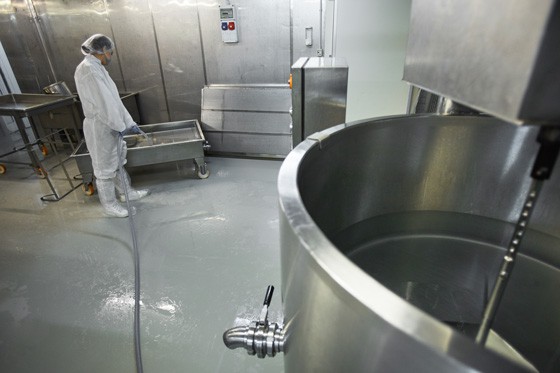Let’s face it, commercial kitchens are some of the busiest and messiest places out there. They’re constantly pumping out meals, and that means they’re constantly producing a lot of dirt, grease, and grime. That’s where commercial cleaners come in. They’re the ones who keep everything spick and span, and ensure that the kitchen is a safe and hygienic place to work in.
But let’s not underestimate the dangers that come with this kind of work. Cleaning in a commercial kitchen can be a hazardous job, and if not done correctly, it can result in serious injury or even death. That’s why it’s important to be aware of the potential dangers and to take the necessary safety precautions.
One of the biggest dangers in commercial kitchen cleaning is slips and falls. With all the water, cleaning solutions, and grease around, it’s no wonder that slips and falls are a common occurrence. In fact, slips, trips, and falls are one of the leading causes of injuries in commercial kitchens. To prevent these kinds of accidents, it’s important to wear slip-resistant shoes and to use caution when walking on wet floors. It’s also important to clean up spills as soon as they happen and to use warning signs to alert others to potential hazards.
Another danger in commercial kitchen cleaning is chemical exposure. Cleaning solutions, degreasers, and other chemicals can be extremely hazardous if they come into contact with the skin or are inhaled. That’s why it’s important to always wear protective gear, including gloves, goggles, and masks. It’s also important to ensure that all chemicals are stored properly and used according to the manufacturer’s instructions.
Fire is also a potential danger in commercial kitchens, and it’s important for cleaners to be aware of this risk. Flammable materials, such as grease, can easily ignite and cause a fire. To prevent this from happening, it’s important to clean up grease spills as soon as they occur and to ensure that all flammable materials are stored properly. It’s also important to have fire extinguishers readily available and to know how to use them in case of an emergency.
In addition to these dangers, commercial kitchen cleaners may also be at risk of injury from sharp objects, such as knives and broken glass, as well as from heavy lifting and repetitive motions. To prevent these kinds of injuries, it’s important to wear appropriate protective gear and to use caution when handling sharp objects. It’s also important to use proper lifting techniques and to take breaks to rest and stretch when doing repetitive tasks.
Now that we’ve covered some of the potential dangers of commercial kitchen cleaning, let’s talk about some safety recommendations.
First and foremost, it’s important to receive proper training before starting any cleaning job in a commercial kitchen. This training should include information on the potential hazards, as well as proper safety procedures and protocols.
It’s also important to have the right equipment and supplies on hand. This includes protective gear, such as gloves, goggles, and masks, as well as cleaning solutions and tools that are appropriate for the job at hand.
Another safety recommendation is to use caution and common sense at all times. This means being aware of potential hazards and taking steps to prevent accidents from happening. It also means being mindful of your own limitations and not taking unnecessary risks.
In conclusion, commercial kitchen cleaning can be a dangerous job, but with the right safety precautions in place, it can also be a safe and rewarding one. By being aware of the potential dangers and taking the necessary safety measures, we can all help to ensure that commercial kitchens remain a safe and hygienic place to work in. So let’s stay safe!
Cheers,

![]()






